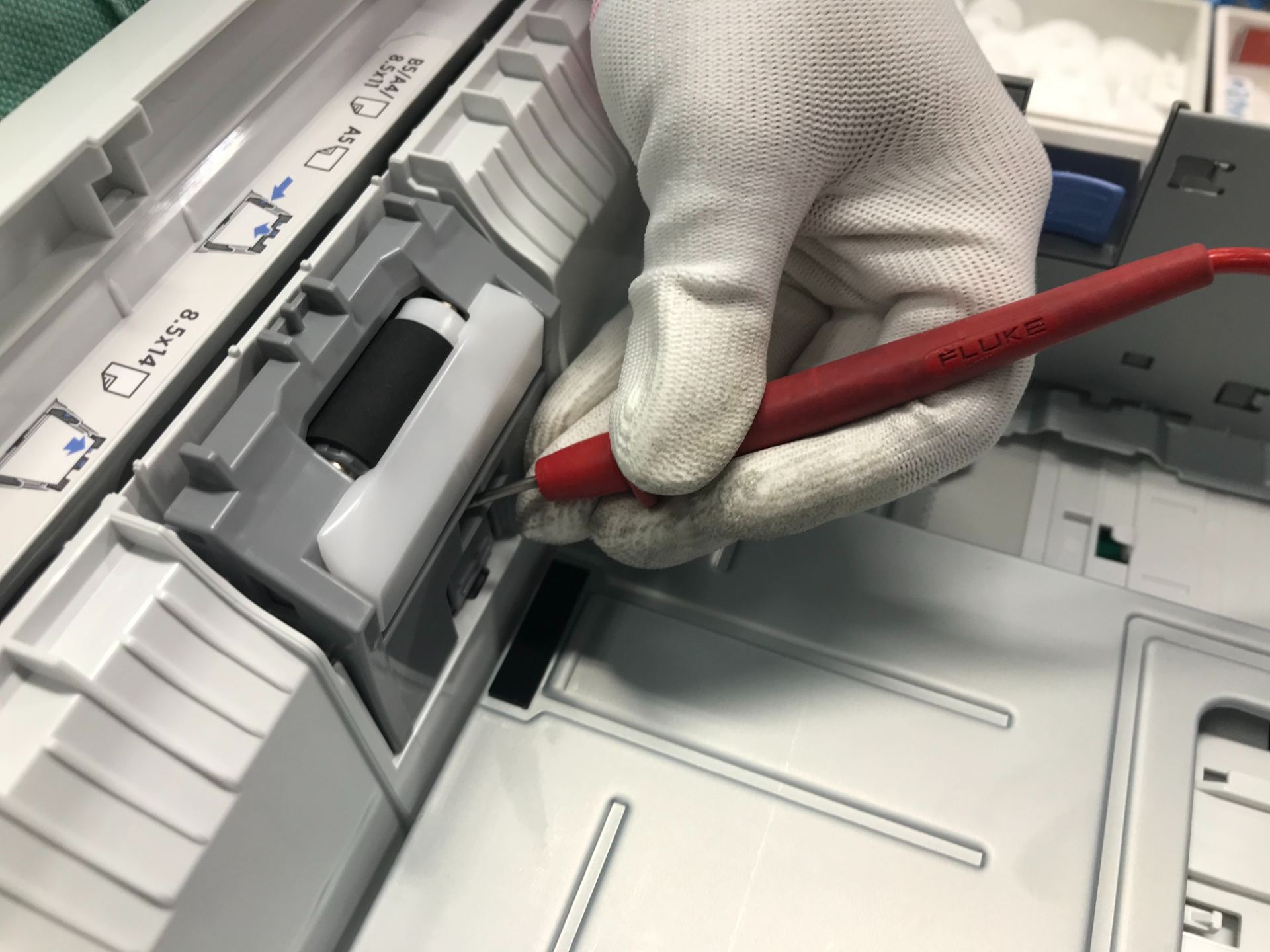Reducing the energy of our printers
By qtnvphi, on 9 May 2023
Dave Hetherington, Divisional IT Manager within Psychology and Language Sciences (PALS), reflects on the ‘STOP PRESS’ initiative, designed to proactively address the wasted energy that our printers consume.

We had a large number of older laser printers dotted around the division, which even when fully off would consume 0.6W per hour.
Over the course of a year, that would be £1.78 of wasted energy: remember, this is the device being fully off, but plugged into the mains with the switch on.
Now when you have approx. 70 odd similar devices, that begins to add up, 70 x £1.78 = £125.09 a year, for nothing.
As we all know, people don’t just leave their printers switched off, sometimes they switch them on, but even in ‘sleep’ mode, they would consume 8.5W an hour, still not printing anything yet, but our costs increase to £25.32 per year per device.
So for 70 devices, just in sleep mode, we are now looking at a bill in the region of £1772.15 per year, and we haven’t even printed anything yet!
Now as an example of how much these costs could rise, when the printer is sitting ‘Ready’ its energy consumption jumps to 14.5W per hour; again, we haven’t printed anything, but just by being ready to print, our energy consumption has nearly doubled.
If the devices never slept, that would be potentially £3.5k per year, still nothing printed, while most devices default to sleep after 30 minutes, we are looking at a potential bill of between £1,700 & £3,500 without printing a single sheet.
But what about if we actually used the printer?
Now while the actual energy usage varies depending on the content being printed, the example device* I’m using here has a maximum consumption of 780W whilst printing, and of course the relevant exponential costs that come with that.
So how did we address this?
Well initially this endeavour didn’t have a name, but as various office moves would take place, we would ask people if they really needed a printer in their office, it turns out that a lot of people didn’t really like having them in their office and also didn’t mind having to leave their office to get to a communal device, so we were able to encourage the removal of 18 devices for recycling in this phase.
Then during one of the Green Team meetings at the start of the pandemic, the STOP PRESS name was coined, and thanks to PALS’ culture of sustainability a lot of people just volunteered to give up the printers they had in their offices. The pandemic actually helped people to see that they didn’t need to print as much and this phase of the project resulted in 28 further devices being offered up for recycling over 18 months.
We raised awareness in various meetings: the IT Committee, PALS Staff meeting and of course PALS Green Team meetings. We added a page to the PALS Sustainability website to highlight the initiative and PALS Digital Signage & newsletters have a slide on this too.
We are now in a new phase, this one specifically targeted printers that are older, no longer supported by the manufacturer and those located in areas that still had excess devices in relation to the amount of computers/staff in that space, this phase should reduce our printer estate by a further 16 devices (7 agreed so far).
So what are you waiting for?
Encourage your departments to do the same!
If we can do it, anyone can.
*The device I’m using for this example is an HP LaserJet P3015.
The cost per day was worked out using the sust-it energy calculator site.
Photo by Phi Phạm on Pexels
 Close
Close

